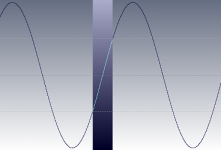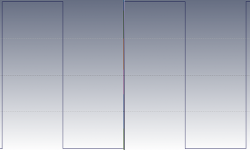Isochrone 10M | Antelope Audio
If your goal is to set up your studio for maximum performance, you will certainly appreciate a clocking reference that is a staggering 100,000 times more accurate than the quartz oscillators used in most equipment.
I found it online, price is about 10k:
Swiss-made Rubidium core with accuracy of 0.03 ppb (parts per BILLION)
Ultra-precise Atomic oscillator with stability of 1 second in 1,000 years
Rubidium core is FEI 5660 Compatible Stanford PRS10 Equivalent
Dual Redundant power supply with automatic switchover
8 BNC Outputs of 10 MHz
Compatible with any device that accepts 10 MHz reference
Utmost ease of operation, just connect it and power it on
Extremely sturdy mechanical construction
Perfect match for OCX, OCX-V and Trinity
well, pro's using it, I believe
Can clock make 10k quality difference ?
If your goal is to set up your studio for maximum performance, you will certainly appreciate a clocking reference that is a staggering 100,000 times more accurate than the quartz oscillators used in most equipment.
I found it online, price is about 10k:
Swiss-made Rubidium core with accuracy of 0.03 ppb (parts per BILLION)
Ultra-precise Atomic oscillator with stability of 1 second in 1,000 years
Rubidium core is FEI 5660 Compatible Stanford PRS10 Equivalent
Dual Redundant power supply with automatic switchover
8 BNC Outputs of 10 MHz
Compatible with any device that accepts 10 MHz reference
Utmost ease of operation, just connect it and power it on
Extremely sturdy mechanical construction
Perfect match for OCX, OCX-V and Trinity
well, pro's using it, I believe
Can clock make 10k quality difference ?
I thought the point of using atomic radioactive decay for a clock was clock accuracy, ie it will show extremely little frequency drift over time. This is virtually pointless for music reproduction. It probably has a small amount of application for recording music where it would be more possible to get your sampling frequency bang on an ideal standard, but besides that, completely pointless.
I thought the point of using atomic radioactive decay for a clock was clock accuracy
Atomic clocks have nothing to do with radioactive decay.
But you're right about the rest, audio doesn't need high accuracy, but low phase noise, and I don't see a phase noise spec here...
Also generating a clock multiple of 44.1k from 10MHz will need a fractional PLL, which will probably have a worse phase noise spec that a reasonable quality clock (crystek et al).
audio has no need for matching absolute pitch to ppb
low phase noise "close in" == audio frequency is what we should want
which you get from OCXO Oven Controlled Quartz Crystal Oscillators with SC cut
at nearly 2 orders of magnitude less cost
and the lower frequency of the phase noise, <100 Hz phase noise is disproportionately more expensive to reduce and probably of little audible consequence considering critical band theory and Fletcher-Munson poor human low frequency low level sensitivity
even ppm is a bit of overkill for audio - do some numbers - what's the Doppler shift from normal "still" air motion in human occupied rooms, your breath, body heat convection currents, normal air exchange rate that keeps the air breathable, not "stuffy"
low phase noise "close in" == audio frequency is what we should want
which you get from OCXO Oven Controlled Quartz Crystal Oscillators with SC cut
at nearly 2 orders of magnitude less cost
and the lower frequency of the phase noise, <100 Hz phase noise is disproportionately more expensive to reduce and probably of little audible consequence considering critical band theory and Fletcher-Munson poor human low frequency low level sensitivity
even ppm is a bit of overkill for audio - do some numbers - what's the Doppler shift from normal "still" air motion in human occupied rooms, your breath, body heat convection currents, normal air exchange rate that keeps the air breathable, not "stuffy"
Last edited:
my understanding is that they use OCXO to get low phase noise, just use the atomic clock for long term drift performance
but GPS signal is lots cheaper if the longer disciplined frequency matters to most of us
Notes on Trimble Thunderbolt performance and modifications
but GPS signal is lots cheaper if the longer disciplined frequency matters to most of us
Notes on Trimble Thunderbolt performance and modifications
Last edited:
The only studio pros using a rubidium clock as a reference will be those who don't understand electronics; in particular, oscillators.voxxonline said:well, pro's using it, I believe
No, not the photoelectric effect either. It will be an electronic transition frequency which they use, probably in the microwave region. I'm sure Google will tell you. In general terms, they phase-lock a high quality quartz crystal oscillator to a particular spectral line of rubidium. The rubidium line will have poor jitter performance (due to temperature etc.) but very good long term drift performance. The crystal PLL will clean this up so you get the jitter of quartz combined with the stability of rubidium. It is only the former which audio requires, so all the rubidium stuff is unnecessary - in fact, the PLL is likely to degrade the jitter performance of the crystal so you would probably get better performance for audio by disabling the rubidium lock!5th element said:It makes more sense that they'd use the photo-electric effect though.
You can get a rubidium atomic clock for a few bucks on eBay. They are pulled from obsolete cell phone tower stations. There are even ones that have the parts need to give a CD clock signal.
Yup, about a hundred bucks when I last looked for them, maybe lower now. They require a few minutes to warm up and lock the PLL, after which they give a very stable 10 MHz digital signal as well as a divided-down 1 Hz digital signal.
Just want to add another interesting device, from the other side of audio product spectrum: https://www.kickstarter.com/project...-genius-light-bulb-with-hd-audi?ref=discovery
It is only kickstarter project, but still- got more than 100000$ instead of 50000$, possible success and unspotted market gap ?
It is only kickstarter project, but still- got more than 100000$ instead of 50000$, possible success and unspotted market gap ?
No, not the photoelectric effect either. It will be an electronic transition frequency which they use, probably in the microwave region. I'm sure Google will tell you. In general terms, they phase-lock a high quality quartz crystal oscillator to a particular spectral line of rubidium.
Isn't it the photo electric effect that gives you the spectral line though? You're bombarding the atoms with a stream of particles that excite the electrons into a higher energy state, they fall back down and release a wavelength of a specific frequency, ie the spectral line? Or is there a different technical term depending on what's doing the exciting?
I add one more, this time from logitech How to Turn Any Old Speakers Into Wireless Streamers | Gadget Lab | WIRED
This is something of unheard qualities and size:
Devialet’s Hi-Tech “Phantom” Implosion Stereo Sounds Better Than Speakers 20X Its Size | TechCrunch
Any comments, guys?
Devialet’s Hi-Tech “Phantom” Implosion Stereo Sounds Better Than Speakers 20X Its Size | TechCrunch
Any comments, guys?
Expensive and pointless unless you are running a digital video studio.
Generally an external clock does not improve jitter, at best it does very little damage.
Does Your Studio Need A Digital Master Clock?
Generally an external clock does not improve jitter, at best it does very little damage.
Does Your Studio Need A Digital Master Clock?
This is something of unheard qualities and size:
Devialet’s Hi-Tech “Phantom” Implosion Stereo Sounds Better Than Speakers 20X Its Size | TechCrunch
Any comments, guys?
A lot of technical great claims by the marketing department,
some of them scientifically fallacious.
Only a few patents have been found, where are the other 60 asserted ?
Currently an absolute lack of measurements.
Some details are in this video with comments, in french :
Devialet a encore frappé. | Jipihorn's Blog
Many of Devialet ideas have been seen elsewhere before :
DA converters --> Wilson, Lidgey, Toumazou (current conveyors)
Classe A + D amplifier --> Vanderkooy, Lipschitz (current dumping)
Linearization of loudspeaker by look-up tables --> Birt
Low frequencies from small loudspeaker box --> Reckinghausen
However, Devialet is certainly a very qualified manufacturer to materialize these ideas while add some of his own. It's quite a pity that the commercial speech to promote the products have so much to upset technical biased people.
The general reference today is cesium oscillators or clocks, as used for refrence in the GPS and Galileo systems. GPS referenced standard clocks with various frequency and time code outputs are around 10-15k USD....... Network time servers included in the sligthly more pricey versions.....
More info here : http://en.wikipedia.org/wiki/Atomic_clock
More info here : http://en.wikipedia.org/wiki/Atomic_clock
A stable clock is great, but what happens if you have to connect that clock signal to a converter with a cable?
The cable acts as a low pass filter, it has inductance and a capacitance. And at these high frequencies this matter.
The dark parts of the picture represent the amount of jitter.
The cable acts as a low pass filter, it has inductance and a capacitance. And at these high frequencies this matter.
The dark parts of the picture represent the amount of jitter.
Attachments
Apparently this is only a problem in the high end audio world. I work in a geophysical and space related business, where we distrubute signals and synchronize measurements all the time. Maybe we haven't made it a problem, or just maybe we don't know better.....
You guys know that if you need a very stable clock, it should be generated very close to where its needed. In converters you can use pll's or asrc to get a stable clock signal from other equipment.
Outboard clocks just don't make any sense. Except where you simultaniously record acoustic music on several different converters.
Sony for a grand
128GB Hi-Res Portable MP3 Digital Music Player | NW-ZX2 | Sony UK
128GB Hi-Res Portable MP3 Digital Music Player | NW-ZX2 | Sony UK
- Status
- This old topic is closed. If you want to reopen this topic, contact a moderator using the "Report Post" button.
- Home
- General Interest
- Everything Else
- £10K Atomic clock:Rubidium atomic reference generator

